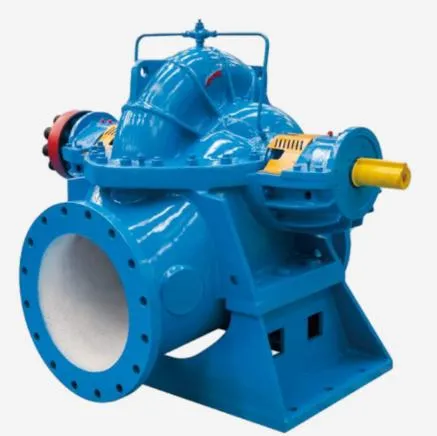TEL:
+86 13120555503
Greek
- Afrikaans
- Albanian
- Amharic
- Arabic
- Armenian
- Azerbaijani
- Basque
- Belarusian
- Bengali
- Bosnian
- Bulgarian
- Catalan
- Cebuano
- Corsican
- Croatian
- Czech
- Danish
- Dutch
- English
- Esperanto
- Estonian
- Finnish
- French
- Frisian
- Galician
- Georgian
- German
- Greek
- Gujarati
- Haitian Creole
- hausa
- hawaiian
- Hebrew
- Hindi
- Miao
- Hungarian
- Icelandic
- igbo
- Indonesian
- irish
- Italian
- Japanese
- Javanese
- Kannada
- kazakh
- Khmer
- Rwandese
- Korean
- Kurdish
- Kyrgyz
- Lao
- Latin
- Latvian
- Lithuanian
- Luxembourgish
- Macedonian
- Malgashi
- Malay
- Malayalam
- Maltese
- Maori
- Marathi
- Mongolian
- Myanmar
- Nepali
- Norwegian
- Norwegian
- Occitan
- Pashto
- Persian
- Polish
- Portuguese
- Punjabi
- Romanian
- Russian
- Samoan
- Scottish Gaelic
- Serbian
- Sesotho
- Shona
- Sindhi
- Sinhala
- Slovak
- Slovenian
- Somali
- Spanish
- Sundanese
- Swahili
- Swedish
- Tagalog
- Tajik
- Tamil
- Tatar
- Telugu
- Thai
- Turkish
- Turkmen
- Ukrainian
- Urdu
- Uighur
- Uzbek
- Vietnamese
- Welsh
- Bantu
- Yiddish
- Yoruba
- Zulu
Telephone: +86 13120555503
Email: frank@cypump.com
Φεβ . 19, 2025 10:14 Back to list
Septic Tank Pumps
Septic transfer pumps play a pivotal role in ensuring efficient wastewater management for residential and commercial spaces. Understanding their function and the nuances involved in selecting the right pump can make a significant difference in system performance. This article provides a comprehensive guide based on personal experience and expert insights.
Trustworthiness in septic transfer pumps is also paramount. Users must feel confident that their pump will function correctly over time. Regular maintenance checks, preferably on a bi-annual basis, can prevent unforeseen failures. During these checks, technicians should examine the impeller system, motor, and float switch to address wear and tear proactively. Additionally, using genuine replacement parts from the pump's manufacturer extends the life of the pump and maintains its warranty. From an environmental perspective, septic transfer pumps enhance sustainability by preventing untreated waste from entering the groundwater or local ecosystems. Efficient waste management is not just a regulatory requirement but also a moral obligation to communities and future generations. Advanced models now feature energy-efficient motors and automated controls, reducing energy consumption while maintaining peak performance. Advancements in technology have made septic transfer pumps more user-friendly. Models featuring smart sensors and automatic alerts inform owners of potential issues before they escalate into costly repairs. This proactive approach saves money and reduces anxiety over unexpected system failures. For those seeking to upgrade their systems, seeking models with these advanced features can provide peace of mind and long-term savings. In conclusion, choosing and maintaining a septic transfer pump requires attention to detail, an understanding of system requirements, and a partnership with knowledgeable professionals. Relying on expert advice and adhering to regular maintenance schedules ensures that your investment not only pays off but also contributes to a more sustainable management of wastewater resources. By prioritizing experience, expertise, authoritativeness, and trustworthiness, homeowners and businesses can enjoy efficient and trouble-free operation of their septic systems.


Trustworthiness in septic transfer pumps is also paramount. Users must feel confident that their pump will function correctly over time. Regular maintenance checks, preferably on a bi-annual basis, can prevent unforeseen failures. During these checks, technicians should examine the impeller system, motor, and float switch to address wear and tear proactively. Additionally, using genuine replacement parts from the pump's manufacturer extends the life of the pump and maintains its warranty. From an environmental perspective, septic transfer pumps enhance sustainability by preventing untreated waste from entering the groundwater or local ecosystems. Efficient waste management is not just a regulatory requirement but also a moral obligation to communities and future generations. Advanced models now feature energy-efficient motors and automated controls, reducing energy consumption while maintaining peak performance. Advancements in technology have made septic transfer pumps more user-friendly. Models featuring smart sensors and automatic alerts inform owners of potential issues before they escalate into costly repairs. This proactive approach saves money and reduces anxiety over unexpected system failures. For those seeking to upgrade their systems, seeking models with these advanced features can provide peace of mind and long-term savings. In conclusion, choosing and maintaining a septic transfer pump requires attention to detail, an understanding of system requirements, and a partnership with knowledgeable professionals. Relying on expert advice and adhering to regular maintenance schedules ensures that your investment not only pays off but also contributes to a more sustainable management of wastewater resources. By prioritizing experience, expertise, authoritativeness, and trustworthiness, homeowners and businesses can enjoy efficient and trouble-free operation of their septic systems.
Share
Next:
Latest news
-
Reliable Non-Clog Sewage Pumps with GPT-4-Turbo Tech
NewsAug.04,2025
-
High-Performance Air Pumps for Sand & Gravel | Efficient Transport
NewsAug.03,2025
-
ISG Series Vertical Pipeline Pump - Chi Yuan Pumps Co., LTD.|Energy Efficiency, Corrosion Resistance
NewsAug.03,2025
-
ISG Series Pipeline Pump - Chi Yuan Pumps | Energy Efficiency&Compact Design
NewsAug.03,2025
-
ISG Series Vertical Pipeline Pump - Chi Yuan Pumps Co., LTD.|High Efficiency, Low Noise, Durable
NewsAug.02,2025
-
ISG Series Vertical Pipeline Pump - Chi Yuan Pumps | High Efficiency, Low Noise
NewsAug.02,2025










